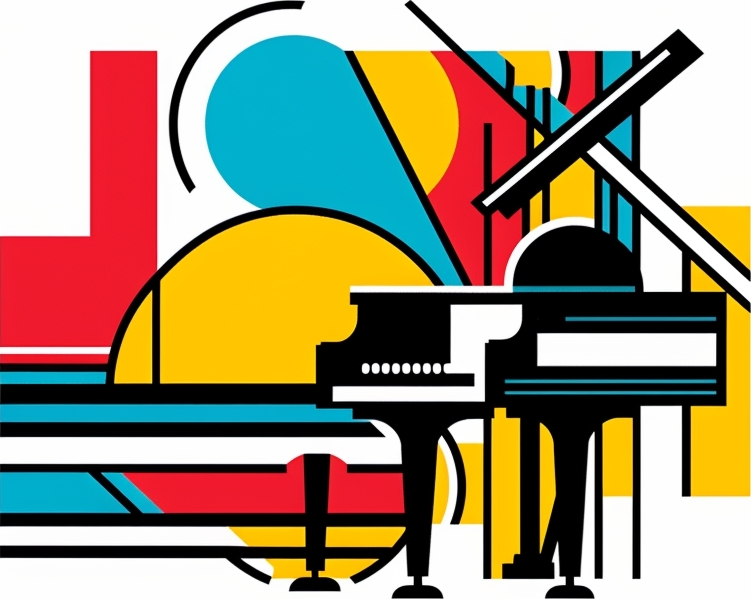Pianos are musical instruments that come in various types, sizes, and shapes. Each type of piano has its unique features, sound, and benefits. Pianos have been around for centuries and still remain one of the most popular musical instruments worldwide.
Whether you are a beginner or a professional pianist, choosing the right piano type can make all the difference in your playing. In this blog post, we will be exploring the different types of pianos available and their unique features so that you can make an informed decision when buying or renting a piano.
The Grand Piano: A Majestic Beauty
The grand piano is the most iconic and well-known type of piano. It is a large and expensive instrument, but it is also known for its unique sound, touch, and beauty. The grand piano is a statement piece and often the centerpiece of any room it is placed in.
Grand pianos come in varying sizes, ranging from the concert grand (9 feet) to the baby grand (less than 5 feet). The larger the grand piano, the longer the strings, which results in a fuller and richer sound. Concert grands are often used in large performance spaces due to their powerful sound, while baby grands are more suitable for smaller rooms.
Grand pianos have several unique features. They have a horizontal frame with strings that radiate outward from a central sounding board. The keys are longer and more responsive, providing greater control and expression to the pianist. Grand pianos also have a distinct pedal system that allows the pianist to sustain or dampen notes for longer periods.
The Upright Piano: Practical and Affordable
The upright piano, also known as the vertical piano, is a more practical and affordable choice for many pianists. It takes up less space, making it perfect for smaller homes or music studios. The upright piano has a vertical frame with strings that run vertically, producing a different sound from that of the grand piano.
Upright pianos are also available in different sizes, ranging from spinet (less than 40 inches tall) to studio (up to 48 inches tall). The larger the upright piano, the more similar it sounds to a grand piano.
Upright pianos also have some unique features, such as a more compact pedal system that is operated by foot levers instead of pedals. They also have a wider music desk that can hold more sheet music, making it easier for the pianist to read and play.
The Digital Piano: Technology Meets Piano Playing
The digital piano is a modern type of piano that contains electronic components, enabling it to produce a range of different sounds. Digital pianos are often equipped with weighted keys that simulate the touch of an acoustic piano. Some digital pianos also have hammer action, which imitates the hammer mechanism of a grand piano.
Digital pianos come in different sizes, from portable keyboards to full-size pianos with 88 keys. They are an excellent choice for beginners or those who live in apartments or small spaces with limited room for a full-size piano.
Digital pianos have some unique features, such as the ability to connect to headphones or external speakers, making them perfect for practicing without disturbing others. They also have built-in metronomes and recording functions that allow you to save and listen to your playing. With modern technology, some digital pianos can even connect to apps and online lessons, making piano learning more accessible and interactive.

The Baby Grand Piano: A Scaled-Down Grand Style
If you love the grand piano’s sound and beauty but don’t have space or budget for a full-size piano, you might want to consider a baby grand piano. The baby grand piano is a scaled-down version of the grand piano and comes in different sizes, ranging from 5 feet to 5 feet 7 inches long.
The baby grand piano shares many features with the grand piano, such as its horizontal frame with strings and responsive keys, but it is more practical for smaller homes or music studios. It still produces a full and rich sound, making it popular for home use and small performances.
Baby grand pianos have unique features, such as shorter strings and a less powerful bass than larger grand pianos. However, they still offer a wide range of dynamics and tonal colors. Baby grand pianos can also make a stunning visual statement in any room, serving as both a musical instrument and a piece of furniture.
The Electronic Piano: A Versatile Option
The electronic piano, also known as the digital keyboard, is an incredibly versatile and portable option for pianists. It is also more affordable than other types of pianos. Electronic pianos use digital sound processing to produce various sounds, including those of a grand piano, electric piano, organ, harpsichord, and many more.
Electronic pianos come in various sizes and styles, from portable keyboards with 61 keys to full-size pianos with 88 keys. They are an excellent choice for beginners, as they are easy to handle and typically have built-in learning features such as guided lessons, lights, and tutorials.
Electronic pianos have unique features, such as the ability to change the sound or add effects with the touch of a button. They are also more lightweight and portable than acoustic pianos, making them easier to move and store. Electronic pianos often allow you to connect to external devices such as tablets, computers, or speakers, making them a versatile and modern option for music production and performance.
Choosing Your Piano Type: Factors to Consider
Choosing the right piano type can be overwhelming, but taking the following factors into consideration can help you make an informed decision:
-
Budget: Pianos can vary greatly in price; consider how much you want to spend and what compromises you are willing to make.
-
Space: Determine the size of the room where the piano will be placed, as well as any accessibility issues such as stairs or narrow hallways.
-
Purpose: Consider why you’re buying a piano – for personal enjoyment, performance, or learning purposes – and choose a type that caters to your needs.
-
Sound: Think about the sound you want to achieve; whether you prefer a bright, clear sound or a more mellow, warm sound can influence the type of piano you choose.
-
Skill Level: Consider your current skill level as a pianist. If you’re a beginner, it might be more practical to opt for a more affordable and portable option such as a keyboard or digital piano.
We hope this guide has helped you understand the different piano types available and their unique features. Ultimately, the right piano type for you comes down to your personal preference, budget, and goals.


Leave a Reply